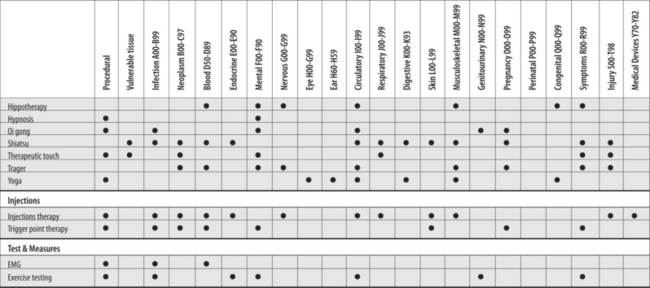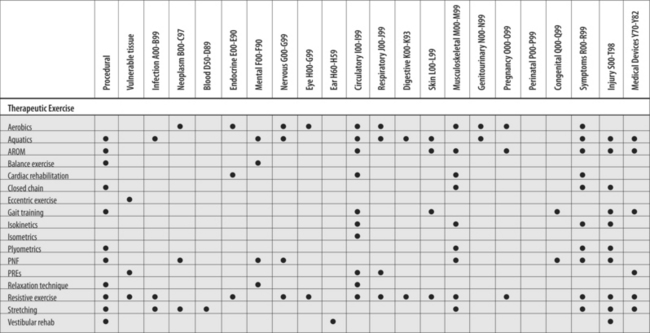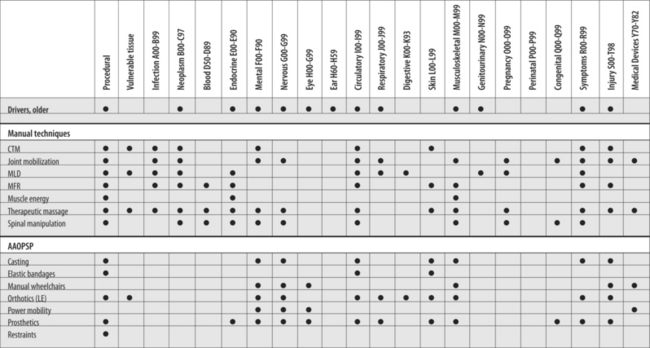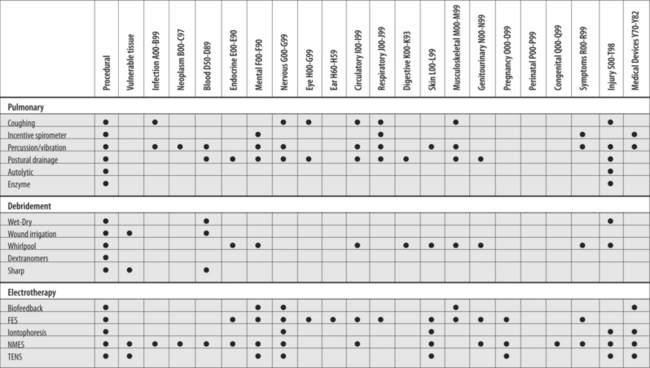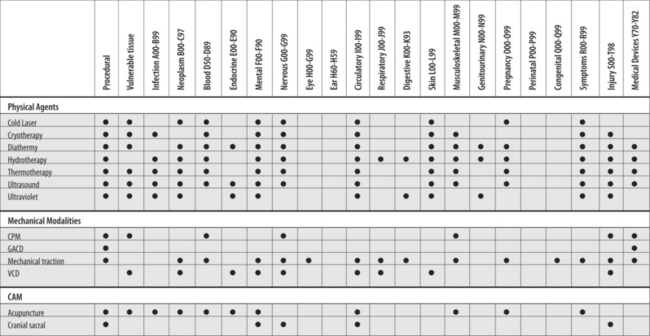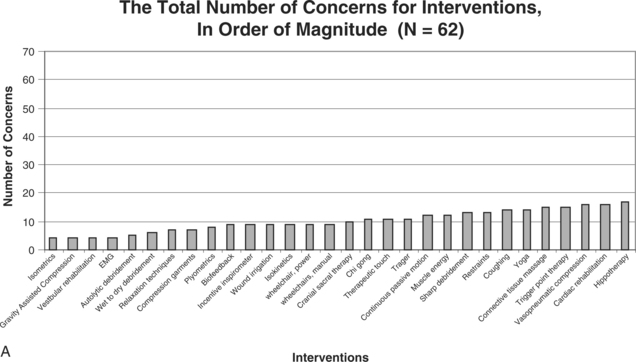Part I Overview
This text contains concerns for more than 100 interventions and 7 tests used in physical rehabilitation and related disciplines. This section provides an overview and an illustrative summary for many of these concerns.a
Table 1 gives a birds-eye view of interventions classified into 10 major categoriesb: therapeutic exercise, manual techniques, AAOPSP (equipment), airway clearance, wound care, injections, physical agents, mechanical modalities, electrotherapy (E stimulation), and complementary and alternative medicine (CAM). Concerns under an intervention are listed by disease categories (ICD-10). By identifying an intervention in the left column and then reading across the disease categories from left to right, the reader can identify categories that may be of concern for a particular intervention (noted by solid circles). For example, power mobility lists the eye disease category as a concern. By consulting the power mobility chapter, the reader will see blindness listed as a contraindication.
Table 1 a, (1) Table and figures illustrated here contain many but not all concerns that are listed in the text. Examples of items not included are communication, teaching, documentation issues, older driver concerns (>100 concerns), and concerns where averaging individual source contraindication (i.e., where sources do not offer a set of guidelines) would be inappropriate (e.g., aerobic exercise, resistive exercise). (2) Figure D (Review of systems) contains procedural and vulnerable tissue concerns, although these two categories are technically not ICD categories (see Preface). b, Also includes older drivers, tests and measures.
< div class='tao-gold-member'>
